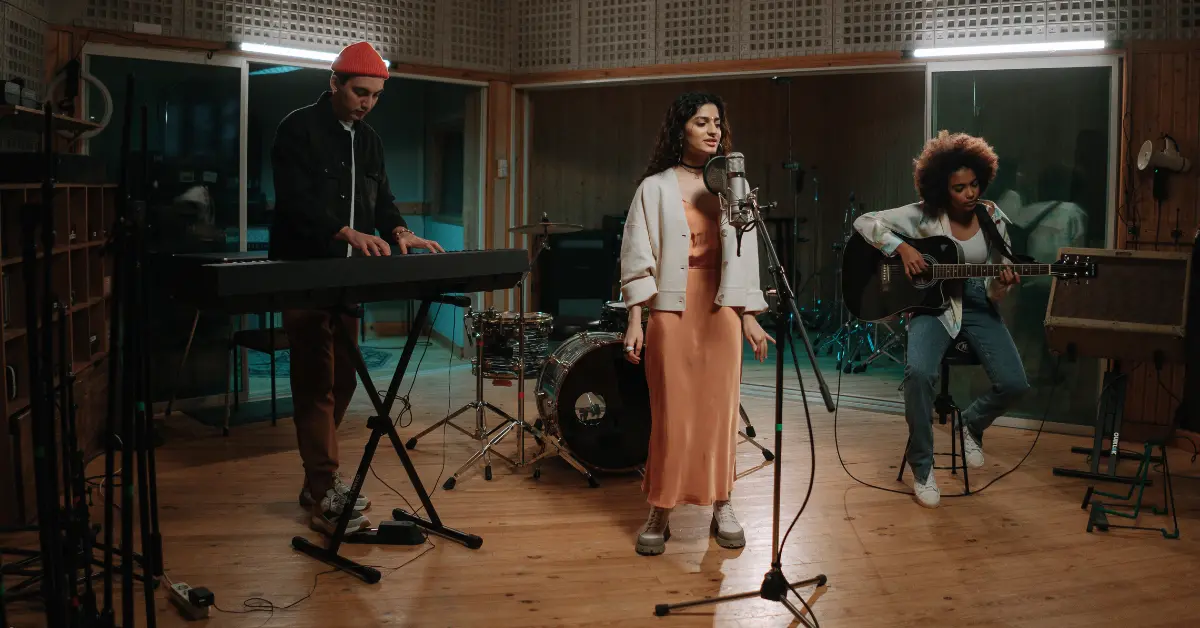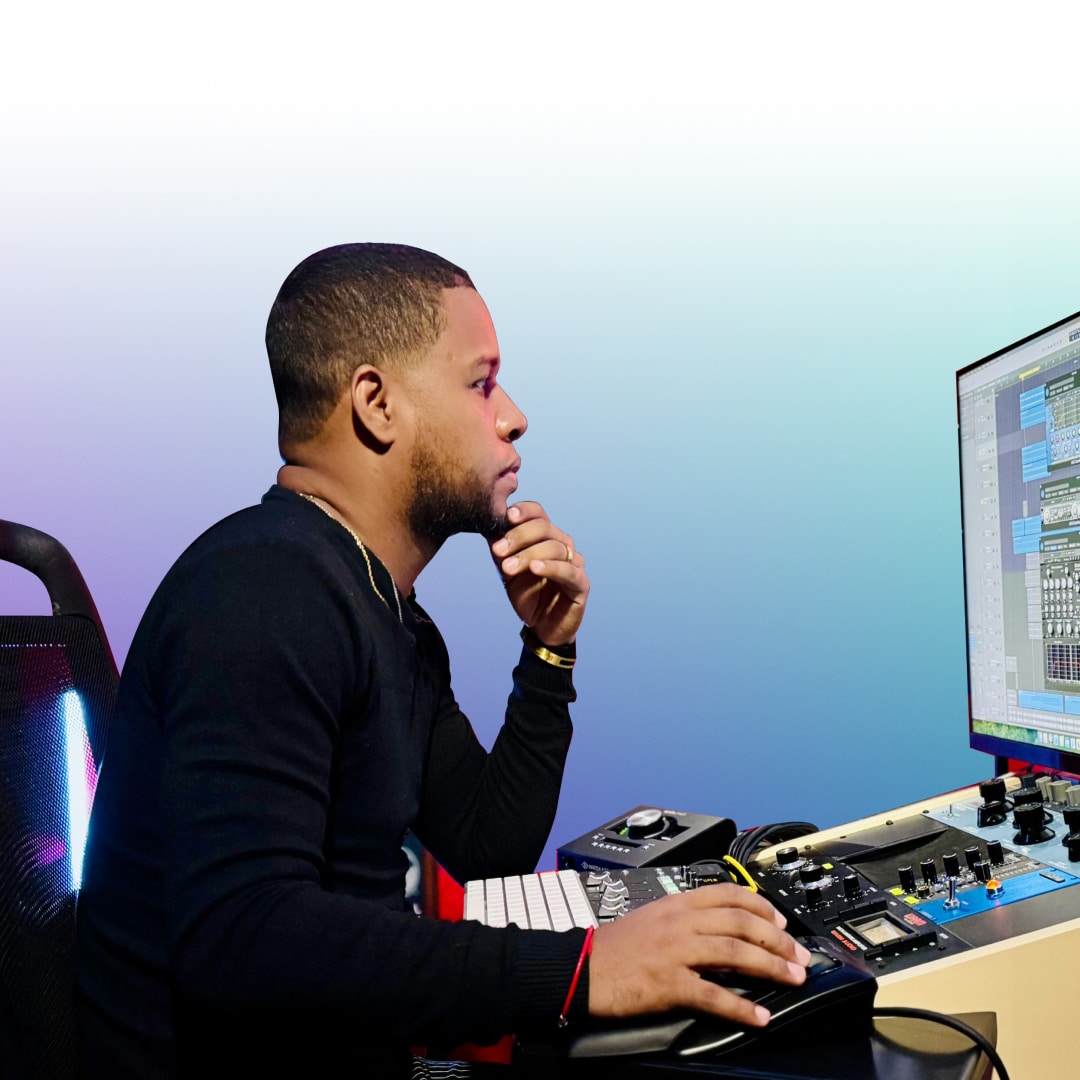Music distribution is the process through which music is delivered from artists to audiences. Historically, this meant physical sales through CDs or vinyl. Today, it predominantly refers to digital means, reaching listeners via platforms like Spotify or Apple Music. The role of music distribution has always been to bridge the gap between the creation of music and its consumption by the public. Effective distribution increases an artist’s visibility and accessibility, making it a critical element of the music industry.
The Rise of Digital Music Distribution
How It Changed Music Accessibility
Digital distribution has revolutionized how music is shared and consumed globally. By transitioning from physical mediums like CDs to digital music distribution platforms, accessibility has drastically increased. This shift means that listeners anywhere can enjoy music with just a few clicks, drastically expanding the reach of artists. For musicians, digital platforms provide a straightforward path to publish their work without the need for traditional gatekeepers such as record labels. Such democratization of music access has enabled a more diverse range of voices to be heard and has significantly reduced the barriers for new artists entering the industry.
The Global Impact
With global music distribution now facilitated by platforms like Spotify and Apple Music, artists from any corner of the world can reach international audiences without significant investments. This global network has led to the rise of cross-cultural collaborations and the blending of genres, enriching the music landscape. Furthermore, emerging markets have seen rapid growth in digital consumption, opening new revenue streams and audience bases for artists worldwide, proving that digital platforms are a powerful tool for cultural exchange and business growth.
The Key Players
Distribution in the music industry space is dominated by a few key players who have set the standards for how music is distributed and monetized online. Companies like Spotify, Apple Music, and Amazon Music lead the charge, offering vast libraries of music to consumers while providing artists and record labels with robust analytics and revenue opportunities. These platforms have changed the landscape of music distribution by creating ecosystems where independent and signed artists alike can thrive. Their influence has prompted a shift in how music is marketed, with data-driven strategies becoming crucial for success.
The Role of Social Media
They are not only essential for marketing and fan engagement but also serve as platforms for music sharing and discovery. Artists use social media to release teasers, full tracks, and music videos, directly engaging with their audience without intermediary layers. Social media platforms have become integral in the promotion of new releases and can significantly impact the popularity and reach of music tracks.
Comparing Traditional and Independent Music Distribution
Traditional Distribution Channels
It typically involves record labels and distributors working together to market and sell physical media like CDs and vinyl in brick-and-mortar stores. This model heavily relies on relationships with large retail chains and extensive marketing campaigns. While it offers broad physical reach, it often comes with high costs and lower profit margins for artists due to the multiple layers of distribution and marketing. Despite the rise of digital, traditional channels still hold significant influence in regions where digital penetration is low, ensuring that all market segments are reached.
Independent Distribution Models
The digital era has spurred the growth of independent music distribution, allowing artists to bypass traditional gatekeepers and directly access their audience. These platforms empower artists to manage their distribution, marketing, and sales with greater autonomy. For independent musicians and smaller labels looking to establish themselves in specific markets without the significant financial support usually needed for traditional distribution, this technique has proven invaluable. Independent models provide a more favorable revenue split and quicker payouts, which are attractive to emerging artists.
Impact on Artist Revenue and Control
Independent distribution not only increases the potential revenue for artists but also enhances their control over their careers. This shift allows artists to make decisions about where and how their music is sold, who it’s marketed to, and how it’s priced. Such control can lead to more strategic and personal connections with their audience, potentially leading to more dedicated fans. Moreover, artists retain a larger share of their earnings compared to traditional models, where profits are often diluted by intermediaries.
The Role of Music Distribution Companies
Connect Artists with Platforms
They serve as the intermediary between artists and streaming platforms, ensuring that music reaches a wide array of digital services and stores. Support is crucial for artists who may not have the expertise or resources to manage these complex processes themselves. Distribution companies simplify the pathway to global audiences, allowing artists to focus more on creativity and production.
Considerations When Partnering with a Distributor
A well-chosen distributor can significantly enhance an artist’s reach and impact, serving as a crucial link between their music and the audience. Below are considerations to keep in mind when evaluating potential distribution partners:
- Reputation and Track Record: It’s essential to investigate their historical performance and the experiences of artists who have worked with them. A reputable distributor should have a proven track record of successfully promoting and selling music. This includes positive testimonials and case studies demonstrating effective partnership outcomes. It’s also beneficial to look at the genres they specialize in to ensure they align with your musical style. Evaluating their reputation in the industry can provide insights into their reliability and the potential success of your partnership.
- Service Scope: Assess whether they provide just digital distribution or if they also handle physical album distribution, which might be important for niche markets or special releases. Consider if they have a strong presence in key markets, particularly if you are aiming for international exposure. Some distributors might offer marketing and promotional services, which can be crucial for emerging artists needing to establish a presence. Ensure that their service offerings align with your current needs and future aspirations as an artist.
- Financial Terms: Understanding the financial aspects of a distribution agreement is paramount. Be clear about any upfront fees, ongoing royalties, and how revenues are shared. The distributor’s pricing model must be transparent, with no hidden costs that could surprise you later. Compare terms offered by different distributors to find the most favorable conditions. A fair and straightforward financial agreement can prevent future conflicts and ensure both parties are satisfied with the partnership.
- Contractual Obligations: Thoroughly reviewing the contract with a distributor is crucial before signing. Pay close attention to the duration of the contract, exclusivity clauses, and the specific rights you are granting to the distributor. It’s advisable to have legal assistance when reviewing these terms to ensure they are fair and do not infringe upon your rights as an artist. Understanding your obligations and those of the distributor can help in setting clear expectations and building a strong working relationship.
- Support and Communication: Finally, consider the level of support and communication the distributor provides. Regular updates and easy access to a support team are essential, especially for artists who may need guidance in navigating the distribution process. Responsive customer service can help address any issues promptly, ensuring that your music distribution does not encounter unnecessary delays. A distributor who values transparent communication and provides robust support is more likely to contribute positively to your career growth.
Ensuring that a distributor’s offerings align with your artistic goals, financial expectations, and need for supportive communication can set the foundation for a successful partnership that helps your music reach a broader audience.
Challenges and Opportunities in Independent Music Distribution
The Advantages
As emphasized before, this approach provides artists with full control over their music rights, creative freedom, and a greater share of the revenues. Without the need to conform to a label’s priorities, artists can explore more experimental or niche markets. Such flexibility often leads to a closer, more authentic connection with their audience, fostering a loyal fan base that appreciates the unique style and voice of the artist.
Common Challenges
While the benefits are substantial, navigating independent music distribution can be fraught with challenges. Artists must handle multiple aspects of their careers, from marketing to negotiating contracts, which can be overwhelming without the support structure of a traditional label. Additionally, without significant promotional resources, achieving visibility in a saturated market becomes a daunting task. The responsibility of managing distribution logistics, also falls on the artist, requiring a level of expertise that may necessitate further education or partnerships.
Strategies for Success
Successful independent distribution requires a well-thought-out strategy that addresses the common pitfalls while maximizing the unique advantages it offers. Here are key strategies for artists:
- Build a Strong Brand Identity: Establishing a strong brand identity is crucial for any independent artist. This involves creating a distinctive artist persona and aesthetic that resonates deeply with your target audience. A compelling brand identity makes you memorable and helps differentiate you from competitors. It’s about more than just a logo or a signature sound; it involves everything from your visual style, and social media presence, to the way you communicate with your fans. Consistency across all touchpoints of your brand strengthens your market position and can dramatically enhance fan loyalty and recognition.
- Utilize Multiple Distribution Platforms: Relying solely on one platform for music distribution can limit your reach and revenue potential. To maximize exposure, it’s advisable to distribute your music across a variety of platforms. This approach not only broadens your audience but also diversifies your income streams, as different platforms have varying revenue models and audience demographics. It also ensures your music is accessible to all potential listeners, regardless of their preferred streaming service.
- Engage with Fan Communities: Cultivating a dedicated fan community is pivotal for sustained success in the music industry. This can be achieved by creating exclusive content, such as behind-the-scenes videos, early access to new songs, or special editions of albums. Direct interactions through Q&A sessions, live streams, or fan meet-ups can also strengthen the bond with your audience. Offering unique merchandise can further engage your fans and provide them with tangible ways to support your career.
- Invest in Marketing: Independent artists must allocate sufficient resources towards effective marketing strategies. This could involve digital advertising, collaborations with other artists, or public appearances. A well-planned marketing campaign should aim to increase the visibility of your music and attract new listeners. It’s important to tailor your marketing efforts to the platforms where your target audience is most active.
- Monitor Analytics: Data is a powerful tool in the music industry. Monitoring analytics from streaming services and social media can provide insights into your audience’s preferences and behaviors. This data allows you to understand which songs are performing well, which promotional strategies are working, and where most of your fans are located. Armed with this information, you can make informed decisions about future releases, tours, and marketing efforts.
- Network with Industry Professionals: Building a network of industry contacts is invaluable for independent artists. Relationships with producers, other artists, and influencers can lead to collaborations that enhance your visibility and credibility. Networking can open up opportunities for live performances, partnerships, and even mentorship. Attending industry events, participating in online forums, and reaching out directly to professionals you admire are effective ways to build these essential connections.
Independent distribution presents a challenging yet rewarding avenue for artists willing to invest the necessary time and resources into their careers. By adopting these strategies, artists can enhance their visibility, connect with fans, and achieve lasting success in the competitive music industry.
The Impact of Music Streaming Services
Revenue Models
While this model provides continuous income and a broader reach, the per-stream payouts are typically low, requiring a substantial number of streams to generate significant income. This structure benefits artists with large followings or viral hits but can be challenging for emerging artists trying to find their footing. The discussion around these models continues as the industry seeks more equitable ways to compensate all artists involved.
Optimizing Music Distribution for Streaming Success
For their music to show up in relevant searches and playlists, artists must make sure it is properly labeled and categorized. Effective use of metadata, such as genre, mood, and artist collaborations, can enhance discoverability. Timing releases to maximize exposure and engaging with fans through platform tools like artist radios or “behind the tracks” features can further augment an artist’s presence on these services.

Embracing modern music distribution models is essential for artists and industry stakeholders aiming to thrive in this digital age. Flexibility, adaptability, and a deep understanding of digital tools and platforms are crucial for navigating this complex landscape. Artists must be proactive in learning about the latest technologies and consumer trends to leverage them effectively. As the industry continues to grow and change, collaboration among artists, distributors, and platforms will be key to developing solutions that ensure fair compensation and creative freedom for all parties involved.













